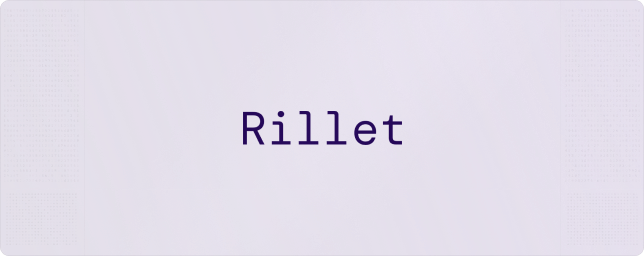
- Keep customers in sync across Sequence and Rillet
- Sync invoices and credit memos in real-time
- Automatically sync payment statuses from Rillet to Sequence
Getting started
- Generate API key
- Connect
- Configure integration
In your Rillet account, go to Settings → API Keys and generate a new API key for Sequence.
Linking customers to Rillet
Before syncing invoices, customers in Sequence must be linked to customers in Rillet. You can link to existing Rillet customers or create new ones directly from Sequence.- Link existing customer
- Create new customer
Navigate to a customer in Sequence and click “Link to Rillet” to search and select the matching Rillet customer.
Syncing invoices
When an invoice is finalized in Sequence, it automatically syncs to Rillet with all line items, amounts, and service periods.Syncing credit notes
When a credit note is finalized in Sequence, it automatically syncs to Rillet as a credit memo. Credit memos include:- Reference to the original invoice
- Credit amount and line items
- Service period
- Product references for accurate categorization
Mapping products to Rillet
Invoice line items in Rillet require a product reference. To ensure successful invoice syncs, map Sequence products to Rillet products.- Map product
- Create product in Rillet
From the Product Catalog in Sequence, select a product and click “Link to Rillet” to map it to an existing Rillet product.
Product mapping behavior
When syncing invoices:- Mapped products: Uses the mapped Rillet product
- Unmapped products: Automatically creates a new product in Rillet when the invoice is synced
Payment status sync
When a payment is recorded in Rillet (e.g., wire transfer, bank payment), Rillet triggers a webhook notification and Sequence automatically marks the corresponding invoice as paid.Payment status syncs from Rillet to Sequence only. For invoices with a Stripe payment link, Sequence will sync the payment status from Stripe and ignore the payment status in Rillet. You need to reconcile your invoice in Rillet separately in this case.
Tax handling
Rillet supports flexible tax configuration at both the customer and product level. When syncing invoices from Sequence:- Taxed customers: Tax codes are applied based on product tax categories mapped in Sequence
- Tax exempt customers: No tax is applied to line items
- Reverse charged customers: Appropriate reverse charge tax codes are applied
Frequently asked questions
How do I check if my invoice synced to Rillet?
How do I check if my invoice synced to Rillet?
You can view the sync status of invoices and credit notes directly in Sequence. A Rillet logo will appear next to successfully synced invoices, and you can click through to view the invoice in Rillet.
What should I do if an invoice fails to sync?
What should I do if an invoice fails to sync?
If a sync fails:
- Navigate to the invoice or credit note in Sequence
- View the error message explaining why the sync failed
- Address the issue (e.g., link customer, map product)
- Click “Retry sync” to attempt the sync again
Why is my invoice not syncing to Rillet?
Why is my invoice not syncing to Rillet?
Common sync errors include:
- Customer not linked: Link the customer to a Rillet customer first
- Product not mapped: Map the product or configure a default product (products will be automatically created if not mapped)
- Currency mismatch: Ensure the invoice currency matches the customer’s Rillet currency
- API error: Check your API key is valid and Rillet is accessible
Do I need to map all my products before syncing invoices?
Do I need to map all my products before syncing invoices?
No. If a product isn’t mapped to Rillet, it will be automatically created when the invoice is synced. However, you may want to map products in advance to ensure they use the correct account codes and settings in Rillet.
How does multi-currency billing work with Rillet?
How does multi-currency billing work with Rillet?
Multi-currency can be enabled by the Rillet support team in your instance. Once enabled, invoices sync in their original currency, and the currency must match the customer’s configured currency in Rillet.